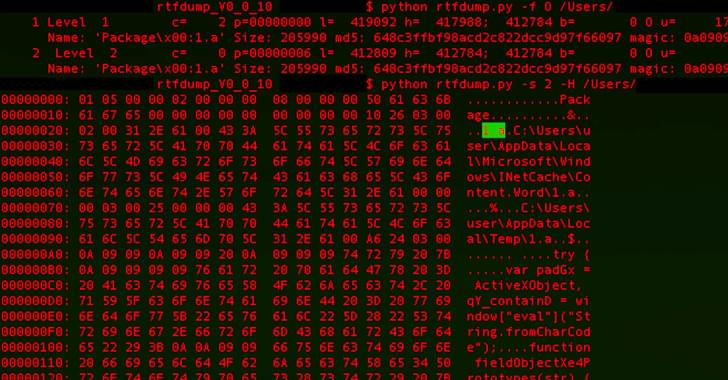Humane/Ted/YouTube.
The former Apple employees Imran Chaudhri and Bethany Bongiorno developed Humane with a “future that is even more intelligent and even more personal,” according to the company’s website.
Humane/Ted/YouTube.
The former Apple employees Imran Chaudhri and Bethany Bongiorno developed Humane with a “future that is even more intelligent and even more personal,” according to the company’s website.

May 11 (Reuters) — Google announced a flurry of artificial intelligence products – but users might need AI just to understand them all.
The Alphabet Inc (GOOGL.O) unit on Wednesday demonstrated or referenced at least 15 different AI products and features ranging from software solely for creating smartphone wallpaper to another for organizing personal files to yet another for photo editing.
Attendees of Google’s I/O conference in Mountain View, California, could be forgiven for leaving the annual event with their heads spinning. Take one of Google’s press releases from the event: “Duet AI serves as your expert pair programmer and assists cloud users with contextual code completion, offering suggestions tuned to your code base, generating entire functions in real-time, and assisting you with code reviews and inspections.”

MOUNTAIN VIEW, Calif. (AP) — Google on Wednesday disclosed plans to infuse its dominant search engine with more advanced artificial-intelligence technology, a drive that’s in response to one of the biggest threats to its long-established position as the internet’s main gateway.
The gradual shift in how Google’s search engine runs is rolling out three months after Microsoft’s Bing search engine started to tap into technology similar to that which powers the artificially intelligent chatbot ChatGPT, which has created one of Silicon Valley’s biggest buzzes since Apple released the first iPhone 16 years ago.
Google, which is owned by Alphabet Inc., already has been testing its own conversational chatbot called Bard. That product, powered by technology called generative AI that also fuels ChatGPT, has only been available to people accepted from a waitlist. But Google announced Wednesday that Bard will be available to all comers in more than 180 countries and more languages beyond English.

The demo is clever, questionably real, and prompts a lot of questions about how this device will actually work.
Buzz has been building around the secretive tech startup Humane for over a year, and now the company is finally offering a look at what it’s been building. At TED last month, Humane co-founder Imran Chaudhri gave a demonstration of the AI-powered wearable the company is building as a replacement for smartphones. Bits of the video leaked online after the event, but the full video is now available to watch.
The device appears to be a small black puck that slips into your breast pocket, with a camera, projector, and speaker sticking out the top.
From a designer with two decades’ experience at Apple.


Over the past year, SideWinder has been linked to a cyber attack aimed at Pakistan Navy War College (PNWC) as well as an Android malware campaign that leveraged rogue phone cleaner and VPN apps uploaded to the Google Play Store to harvest sensitive information.
The latest infection chain documented by BlackBerry mirrors findings from Chinese cybersecurity firm QiAnXin in December 2022 detailing the use of PNWC lure documents to drop a lightweight. NET-based backdoor (App.dll) that’s capable of retrieving and executing next-stage malware from a remote server.
What makes the campaign also stand out is the threat actor’s use of server-based polymorphism as a way to potentially sidestep traditional signature-based antivirus (AV) detection and distribute additional payloads by responding with two different versions of an intermediate RTF file.

In a new study in Nature Machine Intelligence, researchers Bojian Yin and Sander Bohté from the HBP partner Dutch National Research Institute for Mathematics and Computer Science (CWI) demonstrate a significant step towards artificial intelligence that can be used in local devices like smartphones and in VR-like applications, while protecting privacy.
They show how brain-like neurons combined with novel learning methods enable training fast and energy-efficient spiking neural networks on a large scale. Potential applications range from wearable AI to speech recognition and Augmented Reality.
While modern artificial neural networks are the backbone of the current AI revolution, they are only loosely inspired by networks of real, biological neurons such as our brain. The brain however is a much larger network, much more energy-efficient, and can respond ultra-fast when triggered by external events. Spiking neural networks are special types of neural networks that more closely mimic the working of biological neurons: the neurons of our nervous system communicate by exchanging electrical pulses, and they do so only sparingly.

We have various ways of seeing what the brain is up to, from low-resolution electrodes that track waves of activity that ripple across the brain, to implanted electrodes that can follow the activity of individual cells. Combined with a detailed knowledge of which regions of the brain are involved in specific processes, we’ve been able to do remarkable things, such as using functional MRI (fMRI) to determine what letter a person was looking at or an implant to control a robotic arm.
But today, researchers announced a new bit of mind reading that’s impressive in its scope. By combining fMRI brain imaging with a system that’s somewhat like the predictive text of cell phones, they’ve worked out the gist of the sentences a person is hearing in near real time. While the system doesn’t get the exact words right and makes a fair number of mistakes, it’s also flexible enough that it can reconstruct an imaginary monologue that goes on entirely within someone’s head.

The mysterious phenomenon of “spooky action at a distance,” which once troubled Einstein, could soon become as commonplace as the gyroscopes used to measure acceleration in smartphones.
A recent study in Nature Photonics.
<em>Nature Photonics</em> is a prestigious, peer-reviewed scientific journal that is published by the Nature Publishing Group. Launched in January 2007, the journal focuses on the field of photonics, which includes research into the science and technology of light generation, manipulation, and detection. Its content ranges from fundamental research to applied science, covering topics such as lasers, optical devices, photonics materials, and photonics for energy. In addition to research papers, <em>Nature Photonics</em> also publishes reviews, news, and commentary on significant developments in the photonics field. It is a highly respected publication and is widely read by researchers, academics, and professionals in the photonics and related fields.
Year 2021 face_with_colon_three This could be made into a smartphone device that could one day treat everything without the need for surgery or other ways that are not as safe.
Researchers are investigating potential uses for the cell reprogramming technology to treat brain disorders such as Alzheimer’s disease or autoimmune diseases.